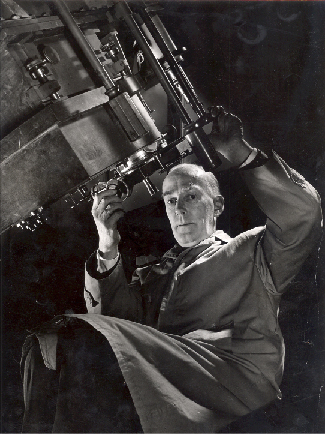| << Chapter < Page | Chapter >> Page > |
The short-period comets (such as Halley) are thought to originate in the Kuiper belt, where small gravitational perturbations from Neptune can gradually shift their orbits until they can penetrate the inner solar system. The long-period comets, however, come from a much more distant reservoir of icy objects, called the Oort cloud.
Careful studies of the orbits of long-period comets revealed that they come initially from very great distances. By following their orbits backward, we can calculate that the aphelia (points farthest from the Sun) of newly discovered comets typically have values near 50,000 AU (more than a thousand times farther than Pluto). This clustering of aphelion distances was first noted by Dutch astronomer Jan Oort , who, in 1950, proposed an idea for the origin of those comets that is still accepted today ( [link] ).

It is possible to calculate that a star’s gravitational sphere of influence —the distance within which it can exert sufficient gravitation to hold onto orbiting objects—is about one third of its distance to the nearest other stars. Stars in the vicinity of the Sun are spaced in such a way that the Sun’s sphere of influence extends a little beyond 50,000 AU, or about 1 light-year. At such great distances, however, objects in orbit about the Sun can be perturbed by the gravity of passing stars. Some of the perturbed objects can then take on orbits that bring them much closer to the Sun (while others might be lost to the solar system forever).
Oort suggested, therefore, that the new comets we were seeing were examples of objects orbiting the Sun near the edge of its sphere of influence, whose orbits had been disturbed by nearby stars, eventually bringing them close to the Sun where we can see them. The reservoir of ancient icy objects from which such comets are derived is now called the Oort cloud .
Astronomers estimate that there are about a trillion (10 12 ) comets in the Oort cloud. In addition, we estimate that about 10 times this number of icy objects could be orbiting the Sun in the volume of space between the Kuiper belt (which is gravitationally linked to Neptune) and the Oort cloud. These objects remain undiscovered because they are too faint to be seen directly and their orbits are too stable to permit any of them to be deflected inward close to the Sun. The total number of icy or cometary objects in the outer reaches of our solar system could thus be on the order of 10 trillion (10 13 ), a very large number indeed.
What is the mass represented by 10 13 comets? We can make an estimate if we assume something about comet sizes and masses. Let us suppose that the nucleus of Comet Halley is typical. Its observed volume is about 600 km 3 . If the primary constituent is water ice with a density of about 1 g/cm 3 , then the total mass of Halley’s nucleus must be about 6 × 10 14 kilograms. This is about one ten billionth (10 –10 ) of the mass of Earth.

Notification Switch
Would you like to follow the 'Astronomy' conversation and receive update notifications?